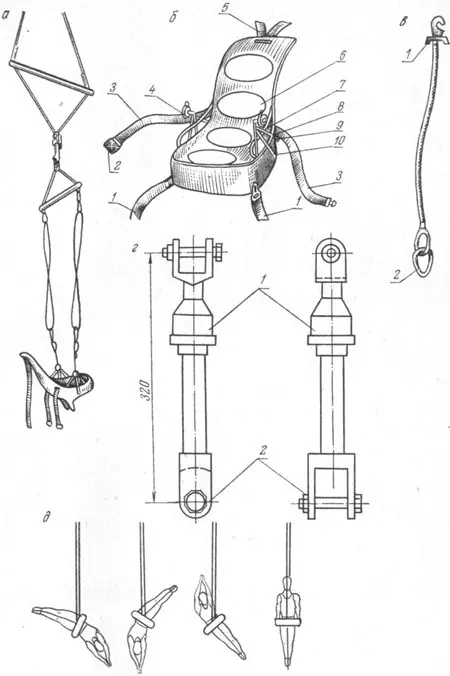In one of our previous articles, we have already focused your attention on how modern athletes (in particular car pilots, motorcycle and auto racers, representatives of parachuting and other extreme sports) work on hardening their vestibular apparatus, how coordination training is carried out movements, and, most importantly, with the help of what special technical means. Today we will tell you about another such device, and, among other things, you will also learn how, if you wish, you can make it with your own hands.
DIY swivel hanging chair.
The device we are considering is a suspension system (Fig. 1, a), consisting of the following main parts: seat, rubber shock absorbers, lower trapezoid, articulated joint, upper trapezoid. The purpose of the device is to train the athlete’s vestibular apparatus, as well as to train movement coordination. According to the diagram we have proposed below, you can easily, if you wish, independently design and assemble such a hanging chair with your own hands - we will tell you in detail how it works:
Seat (Fig. 1, b) is made of duralumin sheet and steel angles. Under the base of the seat there is a shaped axle 10, made of tool steel with a diameter of 15...20 mm, secured with crosses at the bottom and brackets 7 at the top. At the ends of the figured axle, special roller bearings 4 with lugs are attached for suspension to the shock absorbers.
Seat back hingedly connected to the base 8. To give the backrest any position (angle of inclination) there is a lock 9. Straps 3.5 are attached to the base of the seat back for fixing the torso and straps 1 for the legs. The design of the locks 2 on the belts is such that it allows them to be quickly attached and opened instantly. To perform sideways rotations, the athlete is in the seat with his legs inserted into holes 6. The back of the seat is first lowered forward.
Lower trapezius It is a duralumin tube with a diameter of 30...35 mm and a length of 1 m, at the ends of which there is a weight with eyes for attaching shock absorbers at the bottom and two cables for connecting them to the hinge unit at the top. The swivel joint (Fig. 1, d) consists of a thrust bearing 1 with eyes 2 for attaching tension cables to the upper trapezoid. The upper trapezoid is a copy of the lower one; it serves to attach the entire system to the cables of the gymnastic rings.
The suspension system is assembled or removed within 3...4 minutes and weighs 7...8 kg. The suspended swivel chair is designed for a working load of up to 200 kg.
The design of the seat is designed in such a way that in the working position, when the trainee is secured with three belts, the horizontal axis (rotation axis) passes slightly above the common center of gravity of the seat and the person. This position allows, with slight movement of the limbs or head (relative to the axis of rotation), to perform “active” rotations back and forth (Fig. 1, e), thereby improving coordination of movements and training your vestibular apparatus.
By the way, suspension systems and related training methods are now gaining popularity. For example, special forces of the US Navy Marine Corps train on specially designed TRX training devices. Special functional loops allow the athlete to train wherever he is; read more about this and other physical training methods on our website. Unfortunately, it is currently only possible to buy TRX on foreign websites. We hope that in the near future the situation will change, and such training devices will become available to our customers.
Post Views: 115


